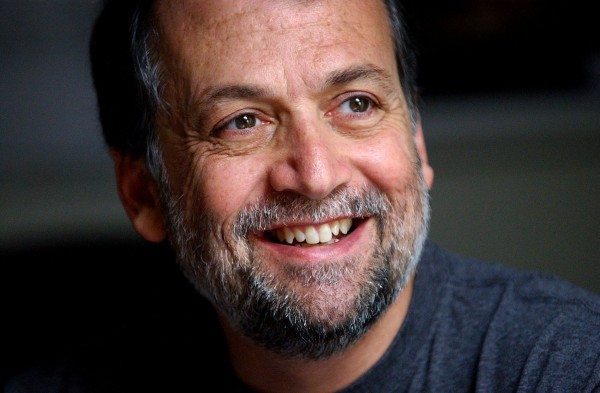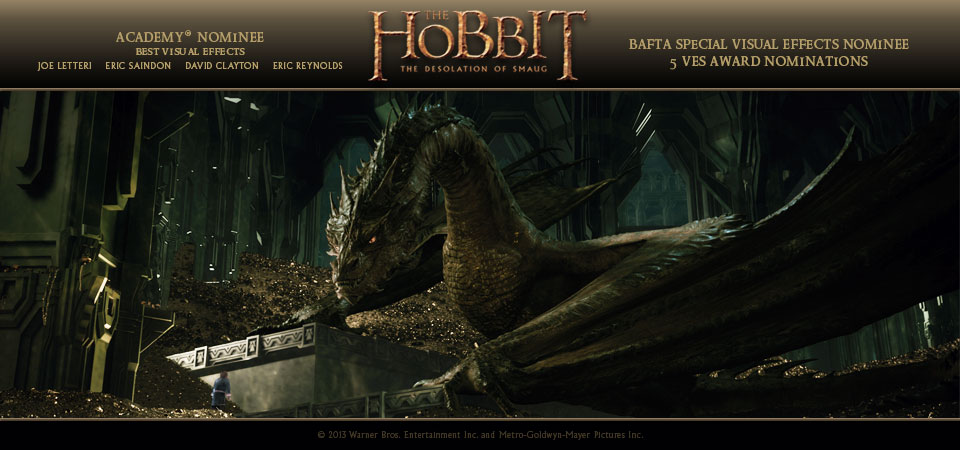
“For me, it’s keeping the focus on the character.” – Joe Letteri
Joe Letteri is Weta Digital’s senior visual effects supervisor and studio director. Among a long list of awards bestowed upon him, he is a winner of four Academy Awards, Four BAFTA Awards, and four VES (Visual Effects Society) Awards. His eighth Academy nomination, the one he shares with his co-workers David Clayton, Eric Reynolds, and Eric Saindon, stands for supervising the visual effects in Peter Jackson’s The Hobbit: The Desolation of Smaug.
Thanks in no small part to Letteri’s efforts, The Hobbit: The Desolation of Smaug has won the VES award for outstanding animated character in a live-action feature.
“Middle Earth is a great place to make a film, and I like the way this film moves. There’s always something fantastic as you move through the landscape, and the action keeps going from piece to piece. I like the way Peter [Jackson] interleaves multiple story lines that keep the film interesting. He takes world-changing events and reduces them to the individual drama, to something you can read on the actors’ and characters’ faces,” says Joe on why The Hobbit deserved to win among so many of other worthy nominees.
Among many other things that make The Hobbit one of the most notable achievements in film industry of this century, is another eccentric feature with a charming reddish glow of narcissism that is rather unusual and at the same time fascinating to a human eye–a dragon.

I consider Smaug a character, not a creature. A creature is something you react to. Smaug is something you engage with. The other character [Bilbo] engages with him and the audience engages with him.
In this film, we have 60 characters. You can’t wrap your head around the fact that they are not real- they’re digital. But with Smaug, we suddenly have this big talking character that seems sort of human even though he’s a dragon.
Such is the nature of filmmaking that the final result we perceive from the screen in a few minutes is really weeks of 24/7 dedication of thousands of people. An immense empire of crafty elements all working simultaneously like a clock. From the shimmer of water drops and leaves under the wind in the willows to the game of shadows on the muscles of the character, all is a result of hours and hours of button pressing of the digital masters.
Creating a believable human is still a technological challenge — how the lighting works with the skin, the muscle simulation, the facial simulation, hair and cloth dynamics. All these simulations still require a lot of handwork. None of this is automatic. There’s really a lot we don’t know. But as we chip away, we understand more about how to do these things and we lock a few more down. We still get in and do work on top, but each time, the base level is a little bit higher.”
For me, personally, the big step was coming here to do Gollum. Before that, we did creatures. If we did a character, we tended to puppeteer it. We could do dinosaurs, but they were creatures. Gollum was the first character that had to work for the film. I remember in Two Towers, Gollum had a major role and he wasn’t going to be Andy Serkis in costume. If that didn’t work, the movie wouldn’t work. He wasn’t the main character, but he was a big focus. So for me, that was the breakthrough: Bring a character that’s almost human to work side by side with actors. For the last 12 years or so we’ve built on that.
To read more of this fascinating interview head over to the Studio Daily and you are guaranteed to find out some pretty intriguing things on the creation of the barrel scene and how Benedict Cumberbatch became the Dragon.


